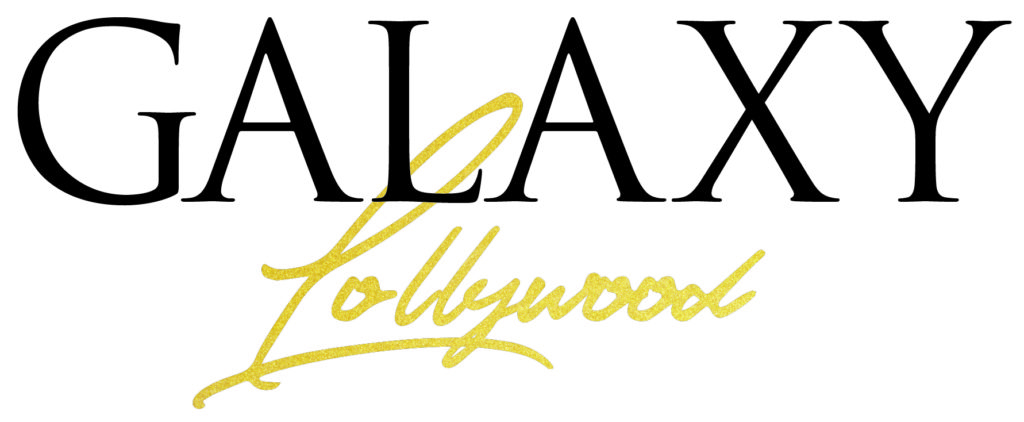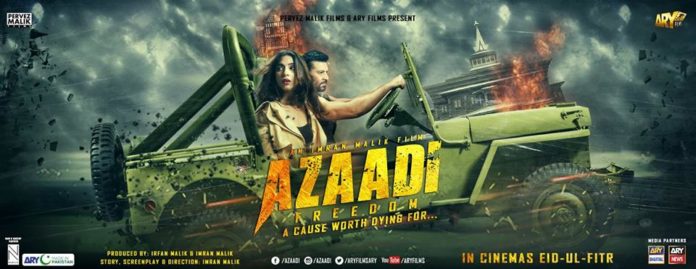Movie Name: Azaadi
Release Date: June 16, 2018
Director: Imran Malik
Review by: Aayan Mirza
Nadeem Farooq Paracha, in his book, ‘End of the past‘, makes some interesting observations that take one to the back alleys of the history of filmmaking in Pakistan. While commenting on the filmmaking class of the 60s and 70s, he writes that since its majority belonged to a petty-bourgeoisie background, their stereotypical portrayal of the rich “…was simply a case of…perceiving the lifestyle of another class that they found to be distant. But that didn’t stop them from undertaking some pretty wild guesswork.”
This “pretty wild guesswork,” is also crystally evident in Moammar Rana and Sonya Hussain starrer, Azaadi, from its Kashmir-struggle centric plot to the performances to its action to so much more. Everything displays an immense immaturity in terms of understanding and eventual handling of a complex political subject.
The film has intellectual myopia setting itself early in it where, in a scene, we are shown that from a religious standing, it is okay; praisable in fact, if a father marries his west-born and eventually-raised daughter (Sonia Hussyn) to a family member (Moammar Rana) back in the country of his origin, at an age so tender that there exists no mental record of the event in her adult memory (only an accidentally found Nikahnama that the entire world keeps telling her has a sanctity like nothing else), let alone there being any question of consent.
And so a journalist of a strong girl; born and raised in England, who has recently spent time in Iraq and is just days away from her marriage to a Hindu boy in London, decides to take a trip back to her native land, Indian Occupied Kashmir, in order to get her recently discovered Nikahnama annulled. Only when she reaches there, she finds out that her cousin husband has abandoned cricket and other worldly affairs to dedicate his life to Jihad. And so the actual story begins.
It seemed as if the writer (Imran Malik), who by the way is also the director and co-producer of the film, either wrote this story with a misconception that what appeals to a particular section of the populace would appeal to everyone, or perhaps he considers the masses to be a bunch of dimwits, thinking that whatever he writes on the paper will sell through as long as he is using a good camera, and has London and Kashmir as locations.
The story, coupled with the dialogues of the film, seemed dated. Something that might have worked in the 80s, but certainly doesn’t belong with an audience that is certainly politically and historically more aware and has multiple narratives feeding it.
A rather ordinary effort in terms of acting as well, Azaadi’s only saving grace in the department; and the movie in general, was its female lead, Sonya Hussyn. Hussyn, barring the part where she is supposed to be a British journalist; failing to sell that image, otherwise not only looked satisfying on-screen, but her acting too was enjoyable.
In contrast, the male lead, Moammar Rana looked to be in constant discomfort, and in most scenes, would deliver his dialogues trembling, in a tone of rage that looked funny, and as far away from reality as it could. His weapon handling too desperately needed a depart from the body language of a Punjabi film star.
The legendary Nadeem Big was good in his space, but then again he was playing the same role that he plays in almost every other project, and so nothing out of ordinary on his part too.
The characterisation, in general, lacked depth, as most characters looked one-dimensional, and the villainous roles, specially, were more a source of comedy than dread or counter-narrative in the film.
The cinematography looked good, and thus, so did the locations in the film. There were, however, scenes where hand-held camera work didn’t fit well and a lot of shakiness ruined much of the experience in those scenes. Direction too, similarly, lacked at numerous departments. The film looked unnecessarily dragged, especially towards the end, and the storytelling could have improved in multiple ways. A lot of the dramatic and serious scenes looked funny, and the few funny ones didn’t have much to offer either.
The editing too looked poor and old-fashioned with a lot of reliance on stock and generic footage, and special effects that were simply horrible.
The music of Azaadi sounded pleasant to ears, but the same cannot be said about the picturisations on it, which relied more on Sonya’s screen beauty and dressing, instead of good angles and other technical aspects. Comments for the background score, on the other hand, are pretty much the same as those for editing above.
Verdict: A story that doesn’t belong in this century, and a film that only has its lead actress and release date going for it.
Rating: 2/5 stars




